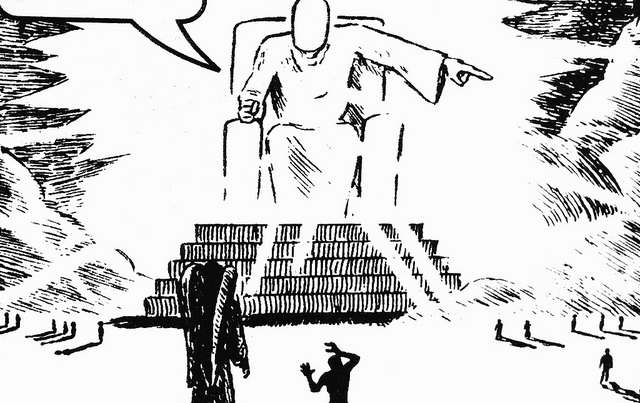Our Weekend Reading series (brought to you by our Patreon backers) continues with a curated selection of articles—and a few other things—from around the Internet that interested us this week! We’re currently on an every-other-week schedule.
Peter
With Christmas coming up in just a few days, I figured I’d share two of my favorite Christmas videos, one humorous and one serious. The humorous one is these little peacock spiders. If you don’t think spiders can be funny or cute, please humor me and give the video a shot. The serious one is this beautifully-orchestrated Air Force band “flash mob” of musicians. The beginning of the video in particular. I love “Jesu, joy of man’s desiring” on the strings.
I’m going to use this platform as a soapbox for a moment. We lost one of our new cats, Gruffy, to FeLV (Feline Leukemia Virus) recently. He was only four. FeLV is one of the leading causes of feline death, and most shelters test for it, but don’t vaccinate for it. And as we found out in the most awful way possible, those tests can present a false negative. So if you adopt a cat, spend the extra $35 or so and get the little fluffball vaccinated. It’s not a panacea, but FeLV is a very fast death sentence. We had poor Gruffy for less than a year and that wasn’t nearly long enough.
Gnome Stew has a great article on using dreams in games. This is something I’ve been wanting to do for a while. I may get into dreams a bit in some future setting design post if I can get some more ideas together.
Most of us experience dreams as we sleep, but do your player characters have dreams? A dream can be a pleasant reminder of times past, a previously unexpressed desire or, possibly, an omen or a deeper, more troubling experience. Dreams are an opportunity for a GM to further character development in a “low risk” environment. A dream can be used to give the flavour of an impending encounter – especially if that encounter is one where the party is unprepared or has underestimated the hazard of the situation. A dream can also help a character examine their past or relive an important experience.
Finally, I thought this article on the world’s steepest railway was pretty cool. There are some pretty steep grades in the Swiss Alps, so the fact that they not only figured out how to get a train up one of them, but keep everyone inside vertical and comfortable for the trip is seriously cool!
Moving through the Swiss Alps, the new Stoos Bahn, which replaces the old Stoos Bahn, gets as high as 2,437 feet up as it moves along gradients as steep as 110 percent, which no funicular car has ever done before. The train travels through three tunnels and a bridge that stretches 1,640 feet.
Grant
Listen. I think we can all agree that 2017 has been … stressful. Thankfully, the Internet has developed an all-natural cure for stress: Funny pictures of animals! The best, of course, are the finalists of the 2017 Comedy Wildlife Photography Awards, which are both delightful and which encourage wildlife conservation. Enjoy yourself.
After that, it’s time for much heavier reading. The “Green Books”—more accurately, The Negro Motorist Green-Book, published annually—were guides for African-American motorists published from 1936 to 1966. Starting with New York and eventually expanding to most of North America, they outlined the dangers black motorists might face in various places as well as a practical guide to any place willing to serve black travelers, acting as a sort of almanac of segregation and violence. They’re a depressing read, but invaluable as historical social artifacts; and the 1947 Green Book has recently been republished in facsimile:
“The reaction to the book is very, very good … and when you can hand one to someone directly, it’s amazing. Unless they’re an older person of colour who lived through the era, they probably heard about this sort of segregation in school – at least, I hope they did – but that was as a very abstract thing. When they get their hands on a Green Book, you can see a dawning cross their face, because it really depicts a practical reality,” said Gertler.
“The heart of the book is a fairly short list of places where black people could have stayed. You look up your home town, and maybe there’s no places listed, or maybe there’s three … and two of them are ‘tourist homes’, basically the Airbnb of the day, private residences that would rent you one of their rooms to crash for the night. There’s this certain expectation that the book might be filled with angry polemics about how unfair this all is, or explaining why this guide was needed, but there’s little of that. The person buying this understood very well what the situation was, they were living it every day. So there were things like Victor Green writing about how he expected that some day this guide would no longer be needed – he didn’t live to see that day, alas – but for the bulk of the book it is just practical information, listings and ads.”
The Getty Museum’s blog “The Iris” has a really interesting rundown of the symbology of flowers in Renaissance art, focusing on seven favorites with specific Christian meanings:
This plant is particularly common within Renaissance manuscripts—though it’s not found in the Getty gardens. Strawberries stand apart from other “berry” varieties because of their three-leaved (trilobed) structure that was associated with the Holy Trinity. In the Renaissance, the strawberry fruit itself likely signified either the “kind deeds” of the Virgin or martyrdom, while the white flowers symbolize purity. Medicinally, the strawberry was believed to fight inflammation: the fruit helped with skin, while the leaves and roots cured ailments of the liver and kidneys.
Jenny
We quote C.S. Lewis quite frequently on the podcast and in blog posts here at Saving the Game. He was an excellent theologian, and is excellently quotable. So as much as I feel I know many of his works quite well, I am far less familiar with his letters to his friends. Here is a collection of excerpts from his letters in which he describes the ways in which George MacDonald affected the way he viewed spirituality.
“George MacDonald I had found for myself at the age of sixteen and never wavered in my allegiance, though I tried for a long time to ignore his Christianity.” References to MacDonald’s books run through C. S. Lewis’s correspondence. What starts as literary appreciation – discussed in lengthy exchanges with his childhood friend Arthur Greeves – becomes a spiritual touchstone. After C. S. Lewis’s conversion, and as he became increasingly well-known as a Christian apologist, he was frequently asked to recommend books that would help other seekers, and as often recommended George MacDonald.
I am a huge library nerd. It’s part of my job as a student of library and information technology. I have become increasingly worried about the ways in which digital storage formats become obsolete at an incredible rate, and I have also pondered the ways in which video game companies run their archives. Surely they have archives, yes? Well, apparently not. In fact many video game companies are actively trying to discourage the preservation of some games. This Kotaku article addresses many of the very niche, specialized issues that come with trying to preserve both physical and digital video game information.
“Time isn’t on our side,” archivist Andrew Borman said. Borman is a games historian who specializes in unfinished titles, recently discovering a canceled prototype for a Diddy Kong Racing sequel earlier this month. Borman notes that even recent media is degrading: DVDs and CDs from the mid nineties are at risk of decay.
“If we wait too long, there won’t be anything left to preserve.”
Merry Christmas. Happy Holidays. Here are some paintings and excerpts of letters from “Father Christmas” to J.R.R. Tolkein’s children.
On December 24, 1920, J.R.R. Tolkien sat down in his study and wrote a letter to his three-year-old son, John, who had recently asked about Father Christmas. In spidery handwriting, in red ink, Tolkien replied as Father Christmas (the English folkloric figure now widely equated with Santa Claus), addressed from “Christmas House, North Pole.”


